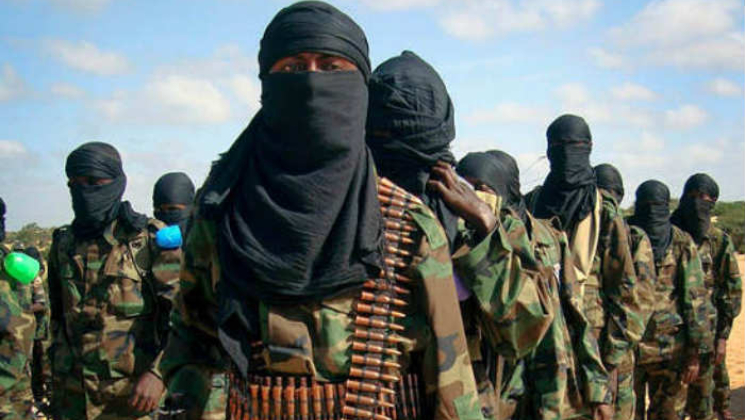- Sponsored -
Al-Badr accepts responsibilty for grenade attacks in Jammu & Kashmir

The fact that grenade attacks have taken place in south Kashmir and Srinagar as well is adding to the fears of the security forces currently. The forces fear that grenades can be stored at a hideout and used at will to create panic and inflict damage. The grenades are lobbed mostly by upper ground workers of the militants, which makes it even more dangerous.
- Sponsored -
Most of the grenade attacks are being carried out by pan-Islamist Jaish-e-Muhammad. Groups such as AlBadr and Tehreek-ul-Mujadeen, who were active in the 90s, have also claimed responsibility for a few attacks.
Curiously, Hizbul Mujahideen and Lashkar-e-Toiba have not been found involved grenade attacks against the security forces. In fact, the Hizbul and Lashkar have not carried out any major attack on the security forces. Security forces believe that the two militant groups have responded favourably to the suspension of operations.
Whether the two groups are holding back due to Ramzan or are using the period to regroup would be clear after the Ramzan month comes to an end in the second week of June.
On January 6, 2017, Muzaffar Ahmad Naikoo alias Muzz Molvi of North Kashmir’s Sopore district was killed in an encounter near Srinagar. As his body was brought to his hometown for burial, the police was quick to claim that Naikoo was the last surviving militant of Al Badr – a militant outfit in Kashmir.
Naikoo was one of the longest surviving militants and the most wanted guerrilla in Kashmir and his killing was seen as an end to the militant outfit he was trying to revive here.
“Big achievement. We have broken the backbone of the Al Badr group that was trying to establish themselves here,” a counter-insurgency officer had told the media last year.
Sixteen months later, the outfit is again putting the counter-insurgency grid of Kashmir on tenterhooks.
In a new video address, a young masked man who identifies himself as Hamza Burhan – the Divisional Commander of Al Badr militant outfit in South Kashmir — has apologised for civilian injuries in the recent grenade attacks and called for a grand revival of the outfit.
The militant outfit went on to claim responsibility for the series of grenade attacks in Pulwama that injured at least 23 people on Monday, including eight security personnel. The outfit, through another video message, has also reportedly threatened more such attacks.
This comes after at least four youths from South Kashmir — Tawseef Ahmad Wani, Sameer Ahmad Seh, Nawaz Ahmad Wagay and Aijaz Ahmad Paul — recently joined the group and announced it by posting their gun-wielding pictures on social media. Senior police officials from Kashmir have also confirmed the development.
A senior police official acknowledged that Al-Badr has started its revival in Kashmir and that the counter-insurgency grid is keeping a tight vigil on their movements.
“Yes, Al-Badr has recruited some youths in South Kashmir and they are trying to recruit more people. This is a challenge for us,” a senior counter insurgency officer told News18.
Five days ago, a youth from Kashmir’s Shopian district announced his joining of militant ranks in the Al-Badr outfit through social media.
A picture of Aijaz Ahmad Paul brandishing a rifle has gone viral on social media, Kashmir Patriot reported. Paul, who hails from Losedanew village in Imamsahabhas, was a BSc student and missing since 30 May. He is among five people who have joined Al-Badr’s ranks in the last three days, reports claim.
According to the South Asia Terrorism Portal (SATP), the Al-Badr is an active terrorist outfit in Jammu and Kashmir, which was proscribed by the Indian government on 1 April, 2002, under the Prevention of Terrorism Ordinance 2001, and is also designated as a Foreign Terrorist Organisation in the United States. Al-Badr is reported to possess a cadre strength of approximately 200, including 120 foreign mercenaries.
The Al-Badr, which earlier operated under the banner of Hizb-ul-Mujahideen, was encouraged by the Inter Services Intelligence (ISI) to operate independently in the year 1998. Indian intelligence sources indicated that a new version of the Al-Badr was formed through the induction of foreign mercenaries serving in several other terrorist outfits in Kashmir.
In 1998 when the outfit was formed, the Al-Badr was led by Lukmaan, a resident of Pakistan occupied Kashmir (PoK).
Bakht Zameen is the present ‘chief commander’, while Arfeen Bhai alias Lukmaan alias Jannisar is reported to be the ‘chief commander’ of Al-Badr in Jammu and Kashmir. Other leaders include ‘launching commander’ Irfan, ‘deputy supreme commander’ Zahid Bhai, ‘publicity chief’ Jasm Bhat, ‘communication in-charge’ Abu Mawai.
The outfit is headquartered at Mansehra in Pakistan, and is reported to have a camp office in Muzaffarabad, PoK.
The Al-Badr is closely linked with the Inter Services Intelligence and Jamaat-e-Islami in Pakistan, according to reports. During the regime of the Taliban militia in Afghanistan, the outfit’s cadres secured weapons and ideological training in many camps across that country.
The Al-Badr is part of the United Jehad Council, a coalition of Pakistan-based militant groups active in Jammu and Kashmir, and is reported to have training camps in the Manshera area of North West Frontier Province in Pakistan, Kotli and Muzaffarabad in PoK.
- Sponsored -
